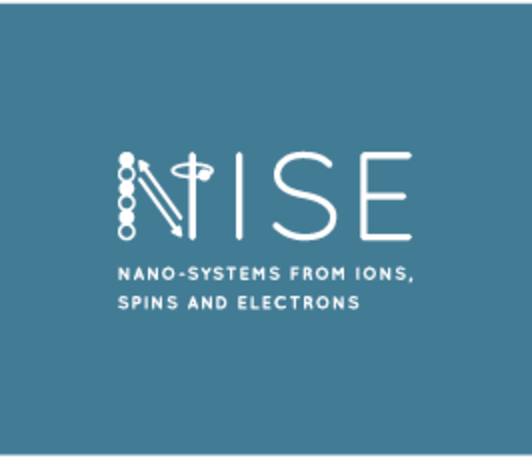Unveiling novel temperature scales at the surfaces of 4f materials by ARPES measurements
Seminar
- Datum: 01.11.2022
- Uhrzeit: 10:30
- Vortragender: Denis Vyalikh
- Donostia International Physics Center, San Sebastian, Spain; IKERBASQUE, Basque Foundation for Science, Bilbao, Spain
- Ort: Max-Planck-Institut für Mikrostrukturphysik, Weinberg 2, 06120 Halle (Saale)
- Raum: Lecture Hall, B.1.11

For a long time, Rare-Earth (RE) intermetallic materials have attracted considerable interest because of their rich and exotic properties including complex magnetic phases, valence fluctuations, heavy-fermion and Kondo behavior and non-Fermi-liquid properties. At the heart of the involved physics is the delicate interplay between itinerant electrons and the lattice of localized 4fstates.
In that regard, the class of RE compounds RET2Si2 (T is transition metal atoms) of the ThCr2Si2 type structure attracts considerable attention. Besides their unique bulk properties evolving from a delicate interplay of 4f and itinerant electrons, these materials serve the models for studying exotic physics within the non-centrosymmetric Si-T-Si-RE surface-silicide block. Within this block, the strength of spin-orbit coupling (SOC) can be tuned by choice of suitable transition metal (T) atoms. It gradually increases by exchanging Co (3d) for Rh (4d) and further for Ir (5d). As a competing ingredient, exchange magnetic interaction may be exploited by inserting elementary 4f magnets like Gd as the RE component. Because the orbital moment of the Gd 4f shell vanishes (L = 0), the pure and large spin moment of Gd will be a strong and robust source of magnetic phenomena. A rotation of the 4f moments to a certain angle relative to the surface normal may be achieved by coupling to a crystal electric field (CEF). To make use of notable CEF effects, a non-vanishing orbital moment L is needed, like for instance in Ho or Dy. Then, this option allows to implement an exchange magnetic field with different strength and orientation at the surface, which competes with the Rashba SOC field and creates additional possibilities to manipulate the properties of the 2D electrons within the considered Si-T-Si-RE system. As the next ingredient, the Kondo effect can be introduced by inserting elements with unstable 4f shell as Yb or Ce. This gives the opportunity to explore the interplay of the 2D electrons with 4f moments within a 2D Kondo lattice in the presence of spin-orbit coupling and a non-centrosymmetric environment.
Our recent experiments have realized the most of such scenarios and demonstrated quite nicely that the Si-T-Si-RE surfaces of the RET2Si2 materials serves as a versatile playground for studying the fundamental properties linked with f-d interactions at reduced dimensionality. It represents a kind of construction kit with Rashba spin-orbit coupling, Kondo interaction, crystal-electric fields and magnetic exchange with different strengths as building blocks. Their mutual combination gives the opportunity to design systems for different scenarios and to study the physics of 2D electron states in the presence of these competing interactions. The most interesting experimental results, which unveil the novel temperature scales at the surfaces of RET2Si2 and RECo2P2 materials and which are linked with the aforementioned scenario will be presented.
Finally, it will be also shown that so essential property of 4f moments as their orientation in the individual RE layers can be reliably and readily derived from the line shapes of the classical momentum-resolved 4f photoemission spectra. This opens a great opportunities to control the 4f-derived magnetic properties in RE-based heterostructures.
References:
[1]. G. Poelchen et al., Interlayer Coupling of a Two-Dimensional Kondo Lattice with a Ferromagnetic Surface in the Antiferromagnet CeCo2P2, ACS Nano 16 3573 (2022).
[2]. D. Usachov et al., Estimating the Orientation of 4f Magnetic Moments by Classical Photoemission, J. Phys. Chem. Lett. 13 7861 (2022).
[3]. M. Mende, et al., Strong Rashba Effect and Different f-d Hybridization Phenomena at the Surface of the Heavy-Fermion Superconductor CeIrIn5, Advanced Electronic Materials 8 2100768 (2022).
[4]. S. Schulz, et al., Classical and cubic Rashba effect in the presence of in-plane 4f magnetism at the iridium silicide surface of the antiferromagnet GdIr2Si2, Physical Review B 103 035123 (2021).
[5]. D. Yu. Usachov et al., Cubic Rashba Effect in the Surface Spin Structure of Rare-Earth Ternary Materials, Physical Review Letters 124, 237202 (2020).
[6]. G. Poelchen, et al., Unexpected differences between surface and bulk spectroscopic and implied Kondo properties of heavy fermion CeRh2Si2, npj Quantum Materials 5 70 (2020).
[7]. S. Schulz et al., Emerging 2D-ferromagnetism and strong spin-orbit coupling at the surface of valence-fluctuating EuIr2Si2, npj Quantum Materials 4 26 (2019).
[8]. A. Generalov et al., Strong spin-orbit coupling in the noncentrosymmetric Kondo lattice, Physical Review B 98 115157 (2018) (Editors' Suggestion).
[9]. A. Generalov et al., Spin orientation of two-dimensional electrons driven by temperature-tunable competition of spin-orbit and exchange magnetic interactions, Nano Letters 17 811 (2017).
[10]. S. Patil et al., ARPES view on surface and bulk hybridization phenomena in the antiferromagnetic Kondo lattice CeRh2Si2, Nature Communications 7 11029 (2016).
[11]. A. Chikina et. al., Strong ferromagnetism at the surface of an antiferromagnet caused by buried magnetic moments, Nature Communications 5 3171 (2014).